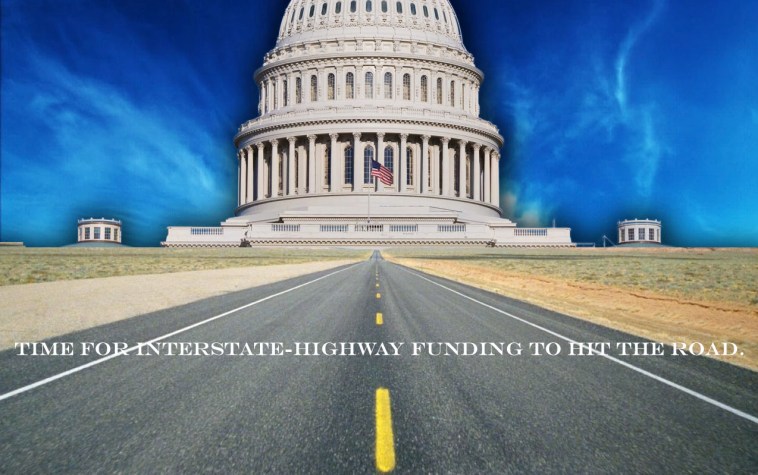This Congress has been criticized for not passing many laws — and praised for that in some quarters. And it’s true that, in quantitative terms, its productivity has been low.
Videos By Rare
A major case in point is transportation. Neither the Democratic-majority Senate nor the Republican-controlled House has passed a reauthorization of what was once known as the highway bill, which used to be done every five or six years.
This failure can be ascribed in part to partisan warfare and to intra-party differences. But it’s also due to the obsolescence of the federal-funding scheme used since the Interstate Highway System was first authorized in 1956.
That was a successful piece of bipartisan legislation. President Dwight Eisenhower, with memories of leading a convoy across America’s primitive roads in 1919, believed the nation needed a system of superhighways to transport troops and materiel in case of foreign attack.
Several states built limited-access toll roads, but there was an obvious need for coordination and for (disguised) subsidies for less affluent states. So, a federal gas tax — a kind of user fee — would finance 90 percent of the cost of interstate highways, with states paying the other 10 percent.
For a long time, the law worked as planned. Most of the interstate network was in place by the early 1970s. The last bit, the breathtaking Glenwood Canyon stretch of I-70 in Colorado, was opened in 1992.
In subsequent highway bills, Congress added bells and whistles — funding for mass transit, for bike paths, authorization of a national 55-mile-per-hour speed limit. Committee chairmen built support for the bill by allowing members to earmark funds for projects in their states and districts.
Now this politically congenial system is broken. One reason is that gas-tax receipts are flat-lining or declining. Higher gasoline-mileage requirements — something Congress has also blessed — are responsible.
The federal government, and most states, tax gas at a per-gallon rate. So higher gas mileage means less money for the Highway Trust Fund. And, in a time of recession and sluggish growth, people have been driving less.
In the last decade, Congress has topped off the trust fund with general revenues. But in times of sequestration, it has predictably been unable to agree on doing more, and raising the federal gas tax has been a nonstarter.
Also hindering agreement has been the abolition of earmarks — the glue that held together the bipartisan coalitions for past transportation bills. As with the gas-tax and mileage requirements, so too with earmark abolition, one politically attractive policy has undercut another.
Innovation News Brief editor Ken Orski estimates that the trust fund would produce $240 billion over the next six years, but continuing current spending levels would cost $320 billion. And no one, he says, has any idea how to close this $80 billion gap.
The solution needs to be found outside the box. Federal funding may have been necessary to coordinate the design of the interstate system and to fund it in many states. But the interstates have been located and built, and differences in state-income levels were much greater in the 1950s than they are today.
Federal funding may be enough to finance needed repairs and upgrades, Orski argues. But, he goes on, “as for large-scale reconstruction and system-expansion projects that are beyond the states’ fiscal capacity to fund on a pay-as-you-go basis, let them be financed with long-term credit and private investment capital.” Tolls, another form of user fee, would provide the revenue.
This, he points out, is already happening in many states — the Beltway HOT lanes in Northern Virginia, New York’s Tappan Zee Bridge replacement, the East End Crossing over the Ohio River near Louisville.
A prime example is the proposed second bridge across the Detroit River to Windsor, Ontario. One-quarter of U.S.-Canada trade passes over the current 84-year-old Ambassador Bridge.
Michigan Gov. Rick Snyder has gotten Canada to completely finance the construction of a new bridge through a public-private partnership. (Federal law authorizes state governors to negotiate the financing and location of U.S.-Canada bridges.)
The point here is that states and localities know their needs better than the federal government. Private capital is available for investment in toll roads and bridges, and can better assess profitability than logrolling members of Congress.
Federal highway bills served America well for many years. But it’s time to move on.
Michael Barone, senior political analyst for The Washington Examiner, is a resident fellow at the American Enterprise Institute, a Fox News Channel contributor and a co-author of “The Almanac of American Politics.”
© THE WASHINGTON EXAMINER
DISTRIBUTED CREATORS.COM

